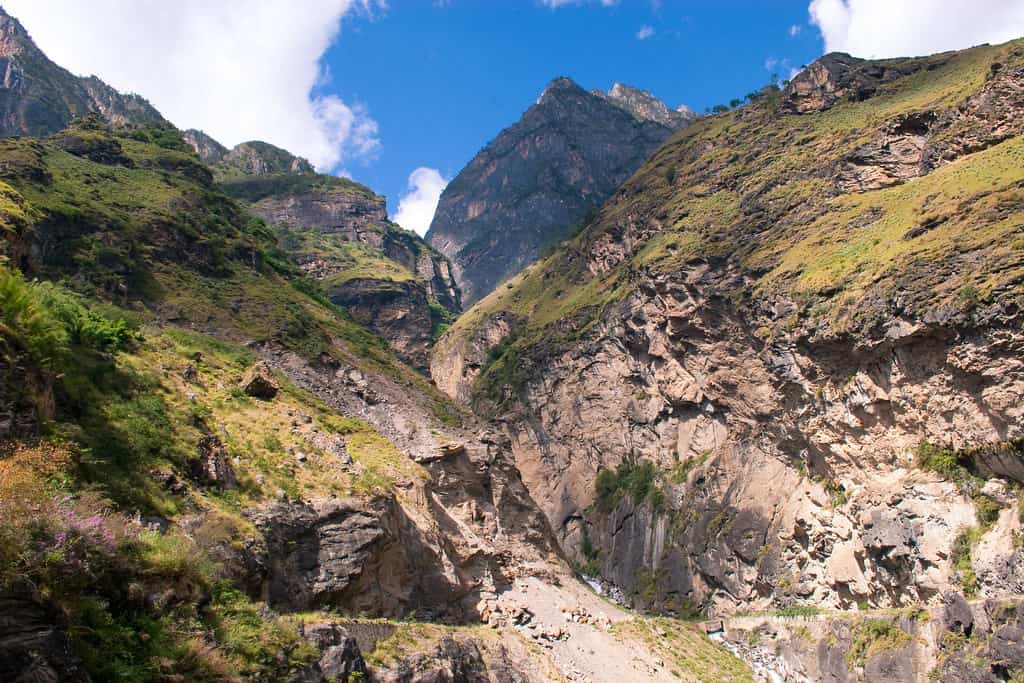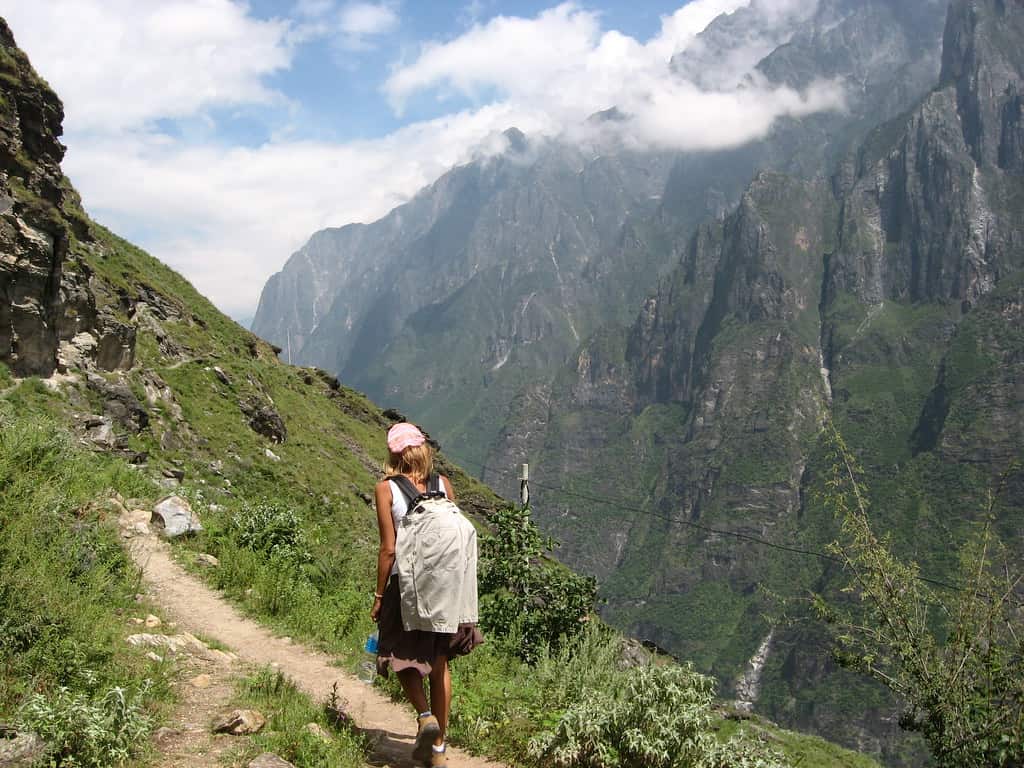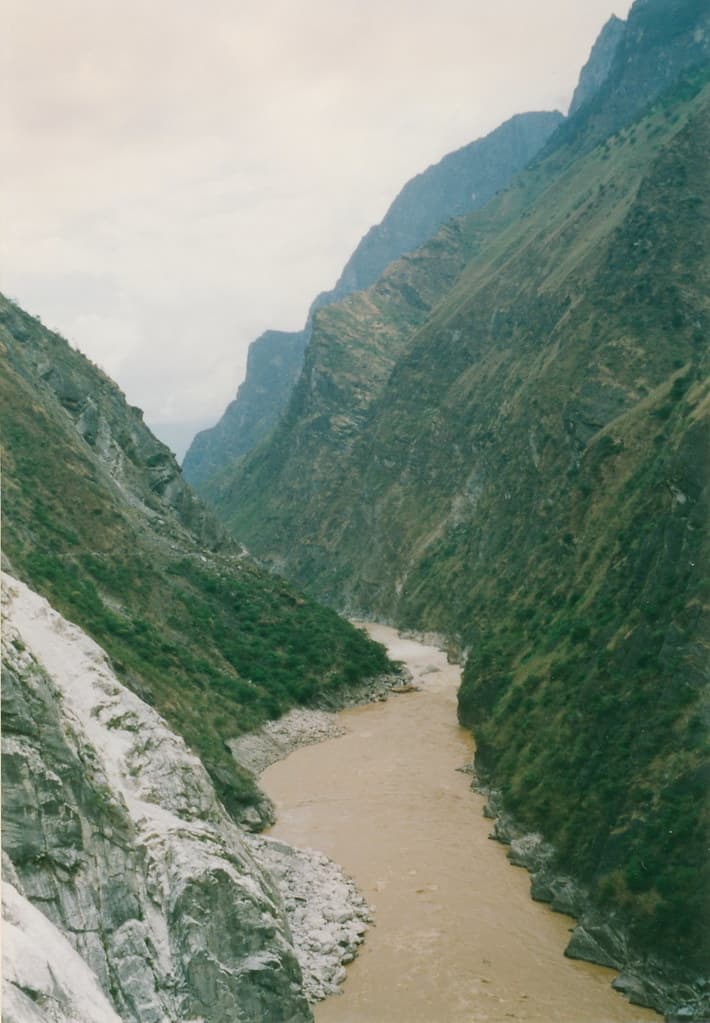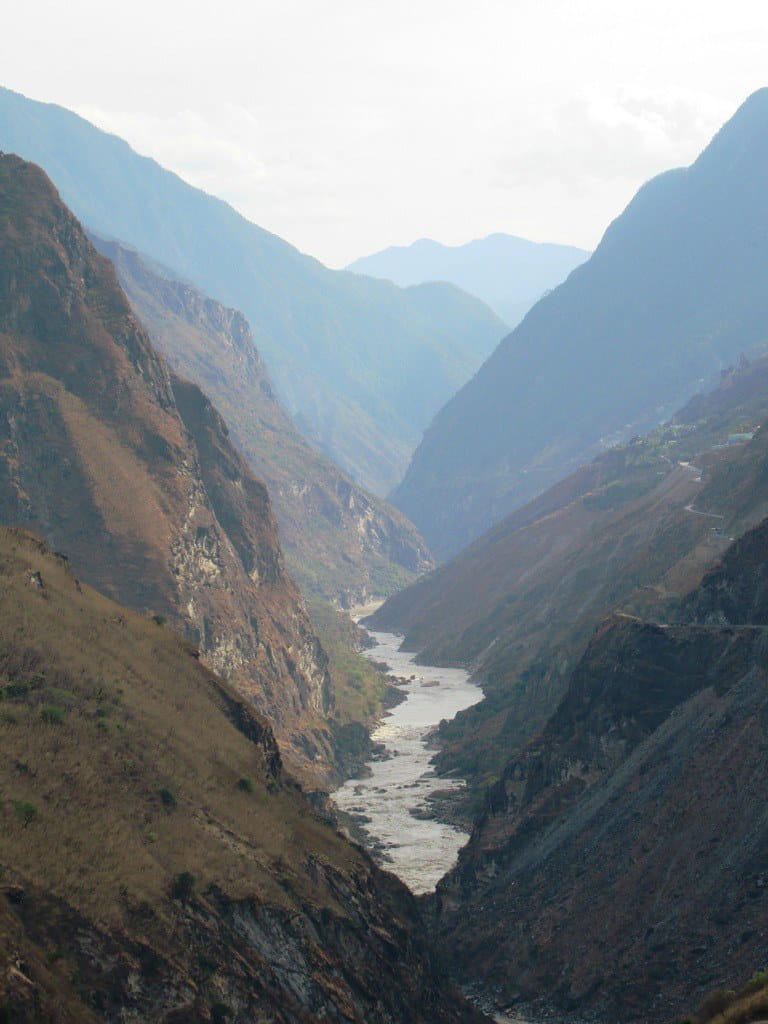
Tiger Leaping Gorge
On the Jinsha River, a significant tributary of the upper Yangtze River, is a beautiful canyon called Tiger Leaping Gorge. It is situated in southwest China, 60 kilometers (37 miles) north of Lijiang City in Yunnan. It is a portion of the protected area known as the Three Parallel Rivers of Yunnan.

The name, according to legend, was given to the river by a hunted tiger who managed to cross it by jumping across a rock in the middle of the river at its narrowest point, which is still 25 meters (82 feet) wide.
Recommended: Amazing Places To Visit In Disneyland
Tiger Leaping Gorge is one of the world’s largest and most beautiful river canyons, reaching a maximum depth of about 3,790 meters (12,434 feet) from river to mountain peak. The native Nakhi people, who live in a few small hamlets, make up the majority of the gorge’s population. Grain farming and, more recently, hiking tourism provide for their primary subsistence.
Geography, Tiger Leaping Gorge
The 15 km (9.3 mi) long gorge is formed by a series of rapids that run beneath 2,000 m (6,600 ft) high cliffs as the river flows between the 5,596 m (18,360 ft) Jade Dragon Snow Mountain and the 5,396 m (17,703 ft) Haba Snow Mountain.
The river in this region serves as the administrative border between Shangri-La County in Dêqên Tibetan Autonomous Prefecture (on the left bank) and Yulong Naxi Autonomous County of Lijiang City (on the right bank).

It isn’t thought to be navigable through the gorge. Four rafters made an attempt to descend the gorge at the beginning of the 1980s but never returned. The Yangtze River’s first expedition to float down its entire length, beginning at the river’s high source at the Gelandandong glacier lake, made the first known successful attempt to navigate the gorge in 1986.
Roads and trails, Tiger Leaping Gorge
The entire gorge can be hiked. The Naxi use the hiking trail, known as “the high road,” as part of their daily lives, despite it occasionally being narrow and occasionally impassable due to heavy rains. Approximately 22 kilometers (14 miles) longer than the lower road, this trail is more interesting. In addition to waterfalls and a good number of guesthouses for hikers, it has a variety of micro-ecosystems. This trek is not recommended during the rainy season due to the poor heating conditions of these guesthouses and the erratic nature of the high mountain weather.

The lower road, which travels through the Gorge for about 195 km (121 mi) from Qiaotou, is a patch of pavement (previously just a simple mule path) that is frequently plagued by rockslides and passes several waterfalls. There have been instances where parts of the road have vanished into the river below. As the road follows the Yangtze, there are more river views and a stronger sense of being in a gorge than there are on the upper trail. One can descend to the river close to the Tiger Leaping Stone, where the tiger is reputed to have jumped, from the point where the high road descends to meet the lower road.

Because a new lower road was being built, the Chinese government decided to close the gorge to tourists in July 2010. Because of this, no government representatives were present to collect the 50 yuan entrance fee from visitors. To access the trail, locals demanded payment of 10 yuan. Despite being closed, a lot of hikers continued to travel the high road. Despite frequent delays due to landslides, some buses continued to use the low road.
Environmental concerns
The Three Parallel Rivers of Yunnan are an integral part of the World Heritage Site since 2003, but the Chinese government floated plans for a hydroelectric dam on the Jinsha River in 2004 despite the importance of Tiger Leaping Gorge. The project was abandoned in 2007 by the provincial government of Yunnan.

Following are specifics about the abandoned project: Despite not having State Council approval, construction had already started on the project’s other 12 dams, which are located just outside the heritage area. According to media reports, the Lijiang city government waived customary procedures to expedite the project.
FAQs: Tiger Leaping Gorge
How difficult is Tiger Leaping Gorge?
Explore this 15.7-mile point-to-point trail near Hutiaoxia, Yunnan. Generally considered a challenging route, it takes an average of 11 h 52 min to complete. This is a popular trail for backpacking, camping, and hiking, but you can still enjoy some solitude during quieter times of day.
Why is Tiger Leaping Gorge famous?
Tiger Leaping Gorge gets its name from a legend. It tells of a tiger who crossed the fierce river by leaping on a rock mid-river to escape from its hunter — a 25-meter (82-foot) jump! A life-size tiger statue in the Gorge is one of its landmarks.
How high is Tiger Leaping Gorge?
The altitude of the entrance of the Tiger Leaping Gorge is 1800 m. The Jade Dragon Snow Mountain at the south bank is 5596 m above the sea level, while the Haba Snow Mountian at the north bank is 5386 above the sea level.
